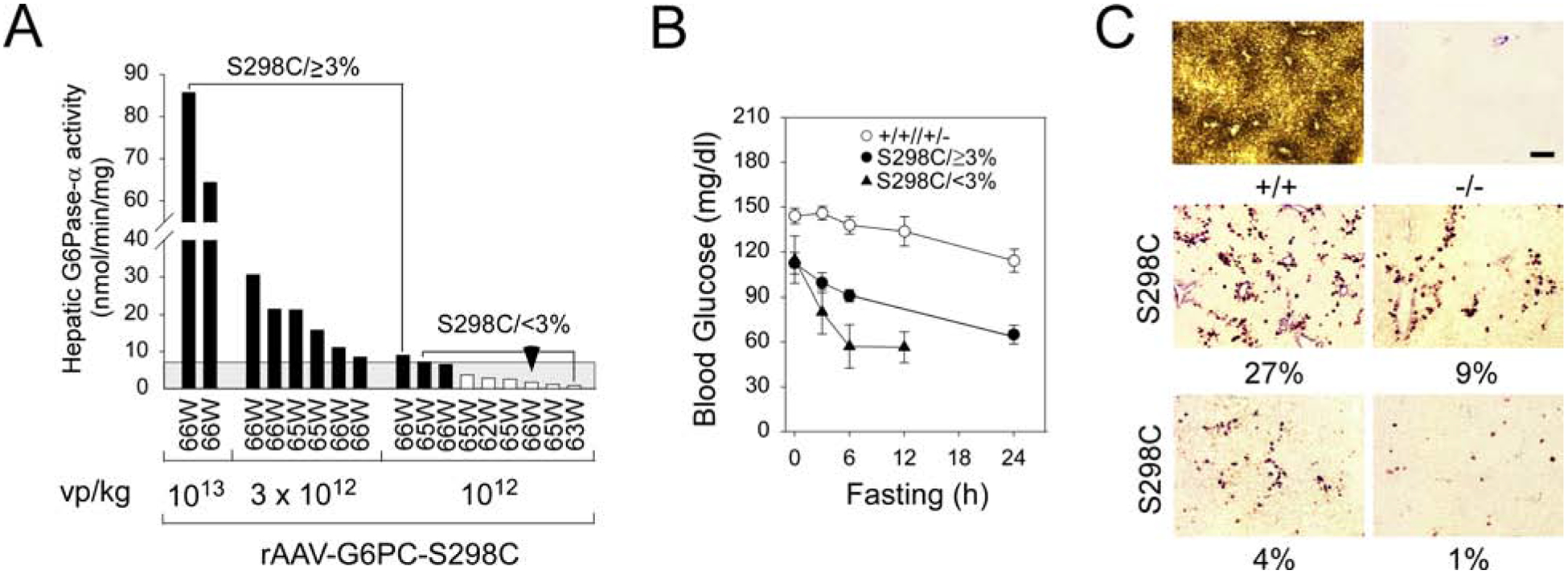Fig. 1.

Biochemical analysis of 62–66-week-old rAAV-G6PC-S298C-treated G6pc−/− mice. (A) Hepatic microsomal G6Pase-α activity in rAAV-G6PC-S298C-treated G6pc−/− mice is shown at the indicated ages in weeks (W). The mice were grouped based on viral dosages: 1013 vp/kg (n = 2), 3 × 1012 vp/kg (n = 6), and 1012 vp/kg (n = 9). Two major subgroups emerge for mice restoring 3.3–35% (S298C/≥3% mice, n = 9) and 0.3–2.9% (S298C/<3% mice, n = 8), respectively of normal hepatic G6Pase-α activity. Hepatic microsomal G6Pase-α activity in 62–66-week-old wild-type mice (n = 15) averaged 240.2 ± 15.8 units, representing 100% normal hepatic G6Pase-α activity. The grey area denotes 3% of normal hepatic G6Pase-α activity. (B) Fasting blood glucose tolerance profiles. (C) Histochemical analysis of hepatic G6Pase-α activity. Each image represents an individual mouse. (+/+), wild-type, (−/−), untreated G6pc−/−, and (S298C), rAAVG6PC-S298C-treated mice. Scale bar = 200μm. The numbers in percentage represent hepatic G6Pase-α activity restored in the rAAV-G6PC-S298C-treated mice.
